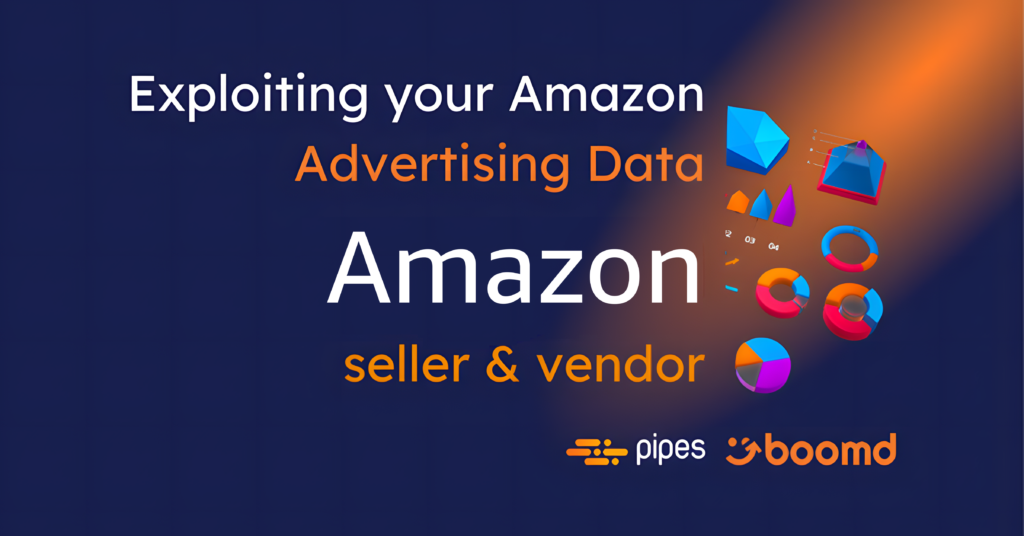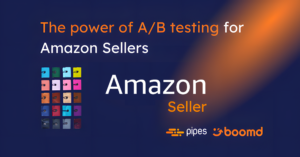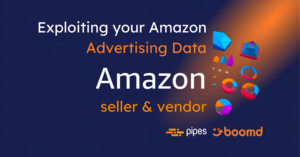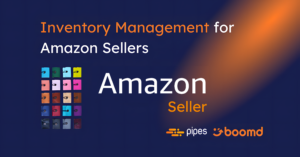Understanding Amazon Advertising data: metrics, analysis, and performance improvement
In the competitive e-commerce landscape, data is the new oil. Companies like Amazon that have access to a wealth of consumer behaviour data hold a significant advantage. They not only understand their customer base but also leverage the insights to drive strategic initiatives, from advertising to inventory management. That hugely valuable data is available to you via Data Virtuality Pipes!
This article aims to dive into Amazon’s Advertising data to help you understand what’s available, what you can do with it, how you can analyse it, and the important metrics to measure and monitor. Lastly, we will explore strategies for improving advertising performance by examining these metrics.
What Amazon Advertising Data is Available?
Data Virtuality offers easy access to Amazon’s Advertising Data stream, for both Sellers and Vendors, allowing you to automate and scale your Amazon business processes. This data is incredibly useful to better understand customer behaviour, ad performance, and sales trends.
Data available is comprehensive and includes:
- Campaign & Ad Group setup data (Sponsored Product, Brand & Display)
- Campaign & Ad group daily performance data
- Product advertising daily performance data
- Keyword advertising daily performance data
- Product & Keyword recommendations
- Advertising invoice data
- Brand metrics data
- Amazon attribution data
- Audit log of changes to advertising setup

Data Virtuality Pipes does all the heavy lifting for you, providing regular downloads of your Seller or Vendor advertising data into a database of your choice, ready for further analysis, and takes care of any changes Amazon makes to its technical interfaces.
What can you do with the Advertising data?
The Advertising data provides a detailed overview of the performance of various advertising campaigns, ad groups, product and keyword targets conducted on Amazon. It covers various aspects such as impressions, clicks, sales, cost per click (CPC), and advertising cost of sales (ACoS). In fact, there is more information available via Data Virtuality Pipes than in Amazon’s own Advertising dashboard.
By utilising this data, Amazon Sellers and Vendors can:
Identify Trends: Understand what’s working and what’s not in their advertising campaigns. By monitoring trends over time, sellers can adjust their strategies to maximise their return on investment (ROI).
Optimise Budget: By understanding which campaigns are performing best, sellers can allocate their advertising budget more efficiently, focusing on campaigns that deliver the best ROI.
Improve Targeting: Sellers can use the demographic and behavioural data to better target their advertisements, resulting in higher conversion rates and sales.
Where to start on analysing Amazon Advertising data?
Analysing Amazon Advertising data involves delving deep into the metrics it offers and interpreting them in a manner that brings out valuable insights. It’s worth reviewing some common approaches, before going into too much detail, to ensure you develop dashboards and reports that really add value for your business. These approaches include:
Descriptive Analysis: This involves examining metrics to understand the overall performance of your campaigns. It helps to identify broad trends and patterns, and to monitor key indicators over time.
Diagnostic Analysis: Here, you drill down into the data to understand why certain trends or outcomes occurred. This could involve examining a particular time period, product category, or customer segment to pinpoint causes.
Predictive Analysis: Using historical data, you can forecast future trends. With these insights, sellers can anticipate and prepare for future events such as demand spikes or ad performance downturns.
Prescriptive Analysis: Here, you draw on insights from the above analyses to develop strategies for improving your performance. This could involve adjusting budgets, changing targeting parameters, or revising your product listings.
What important Advertising metrics are useful to measure and monitor?
A variety of metrics can be derived from your Advertising data. However, a few stand out as particularly insightful for monitoring your Amazon advertising performance:

Impressions: The number of times an ad is displayed. High impressions indicate that your ad is reaching a large audience, but not necessarily leading to clicks or conversions.
Clicks: The number of times an ad is clicked. This is a more engaged level of interaction compared to an impression.
Click-Through Rate (CTR): This is calculated as clicks divided by impressions. A higher CTR suggests that your ad is relevant to the audience and enticing enough to prompt them to click.
Conversion Rate (CR): The number of sales divided by the number of clicks. A higher conversion rate indicates that a larger proportion of the people who clicked on your adverts ended up making a purchase.
Advertising Cost of Sales (ACoS): The total ad spend divided by sales. This represents the proportion of your sales that you’re spending on advertising. A lower ACoS indicates a more efficient advertising campaign.
Return on Advertising Spend (ROAS): The inverse of ACoS, calculated as total sales divided by total advertising spend. A higher ROAS means you’re getting more sales revenue for your advertising spend.
Because you have information at campaign, ad group, keyword level, across all marketplaces, you can calculate these metrics for all the important dimensions of your advertising data.
Improving Advertising performance by looking at these metrics
Improving advertising performance involves using the insights from these metrics to tweak and adjust your ad campaigns. Some strategies include:
Improve Ad Relevance: If your CTR is low, it might indicate that your advert isn’t resonating with your target audience. You might need to tweak your advert content, or adjust your targeting to better align with your ideal customer.
Boost Conversion Rates: If your conversion rate is low, consider optimising your product listings with more appealing images, better product descriptions, or more competitive pricing.

Optimise Ad Spend: Use your ACoS and ROAS to guide your advertising budget. If a campaign has a high ACoS or low ROAS, it may not be worth the investment. Instead, focus on campaigns with a low ACoS and high ROAS.
In conclusion, Amazon provides significant amounts of raw advertising data for you to analyse and take action on. Data Virtuality Pipes makes accessing that data simple. By understanding and effectively analysing this data, sellers can optimise their advertising strategies, making more informed decisions, and ultimately driving better performance and higher sales. The key lies in continuously monitoring, analysing, and tweaking your campaigns based on the insights derived from these crucial metrics.
Data Virtuality Pipes, in partnership with a specialist Amazon agencies like Boomd, plays a crucial role in helping sellers make informed decisions based on their data. By integrating Amazon data with Data Virtuality Pipes, sellers can monitor performance metrics, identify trends and patterns, enhance competitive analysis, and automate reporting processes!
About Boomd
A full-service Amazon agency, with a team of Amazon Vendor, Seller and data analytics experts, helping brands, manufacturers and distributors sell profitably on all Amazon marketplaces worldwide. Follow them on LinkedIn.
Title: Exploiting your Amazon Advertising data
Series: Amazon Sellers
Author: Nick Turner, Co-Founder, Boomd Amazon Agency
Date: June 2023







